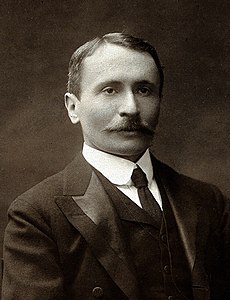Sir Aurel Stein
| Sir Aurel Stein | |
|---|---|

Stein in 1909
|
|
| Born | Stein Márk Aurél 26 November 1862 Budapest |
| Died | 26 October 1943 (aged 80) Kabul, Afghanistan |
| Citizenship | British |
| Nationality | Hungarian (birth)/British (naturalised) |
| Fields | Archaeology |
| Influences | Xuanzang; Sven Hedin |
Sir Marc Aurel Stein, KCIE, FRAS, FBA (Hungarian: Stein Márk Aurél) (26 November 1862 – 26 October 1943) was a Hungarian-British archaeologist, primarily known for his explorations and archaeological discoveries in Central Asia. He was also a professor at Indian universities.
Stein was also an ethnographer, geographer, linguist and surveyor. His collection of books and manuscripts taken from Dunhuang caves is important for the study of the history of Central Asia and the art and literature of Buddhism. He wrote several volumes on his expeditions and discoveries which include Ancient Khotan, Serindia and Innermost Asia.
Stein was born to Nathan Stein and Anna Hirschler, a Jewish couple residing in Budapest in the Austro-Hungarian Empire. His parents and his sister retained their Jewish faith but Stein and his brother, Ernst Eduard, were baptised as Lutherans, apparently to free them from the anti-semitism which would have denied them access to education and advancement. At home the family spoke German and Hungarian, the language of Hungarian nationalist revival in the 19th century, and Stein was proud of this heritage for the rest of his life. He attended Catholic and Lutheran gymnasiums in Budapest, where he mastered Greek, Latin, French, and English before going on for advanced study at Universities of Vienna, Leipzig and Tübingen. He graduated in Sanskrit and Farsi and received his Ph.D. from Tübingen in 1883.
...
Wikipedia
